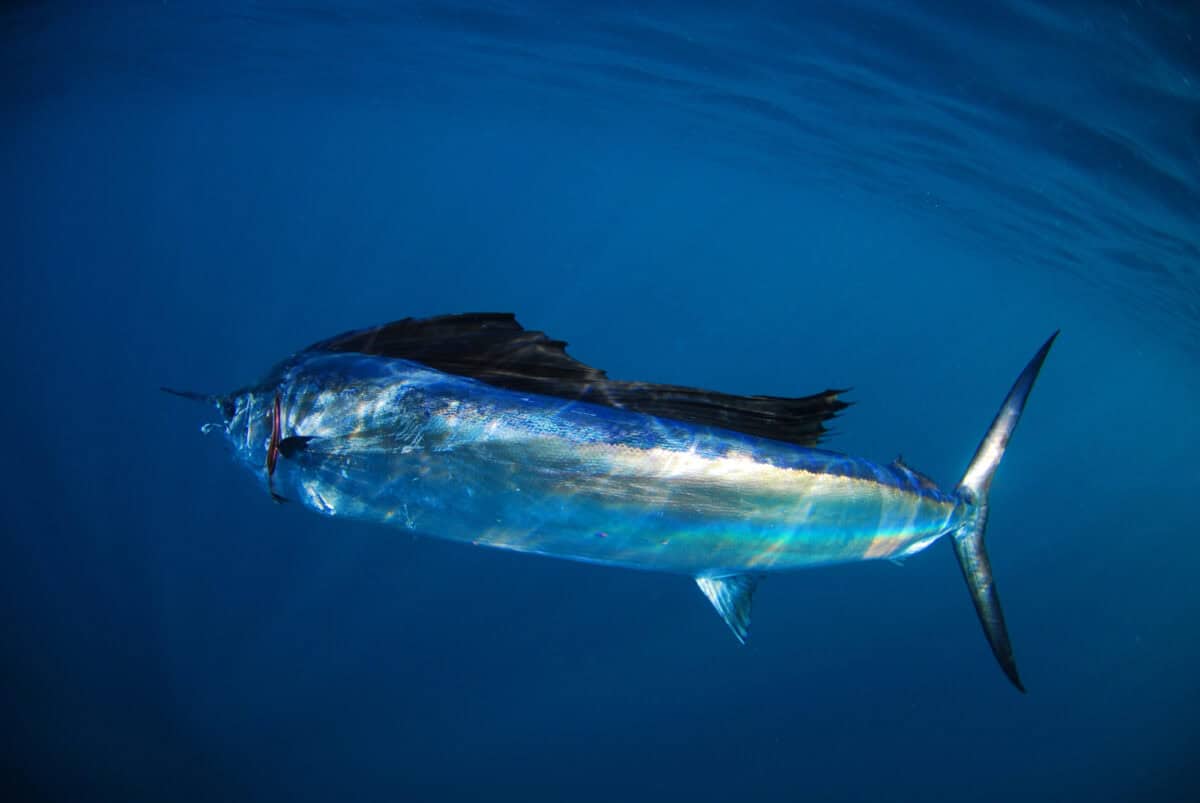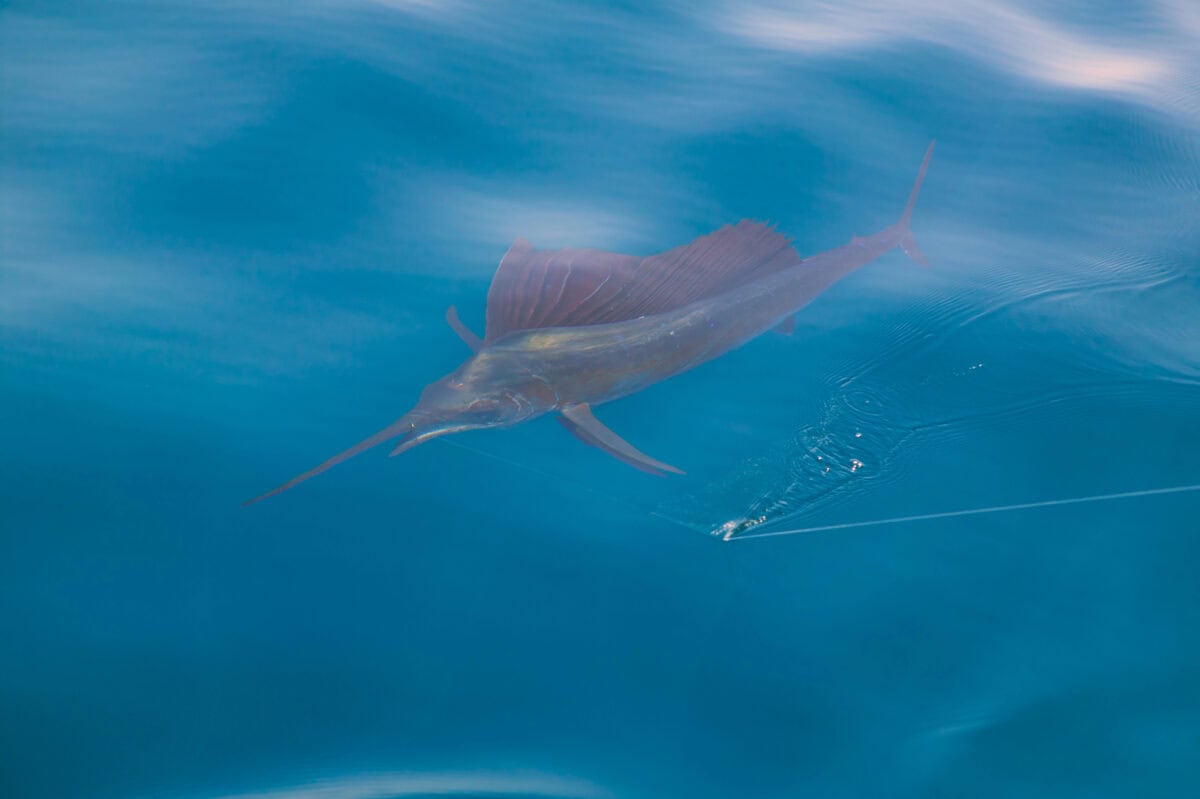The sailfish, often acclaimed as one of the fastest swimmers in the ocean, is a marvel of nature. Known for their incredible speed and agility, these fish have captivated the interests of marine biologists and ocean enthusiasts alike. With their striking dorsal fins, dynamic hunting methods, and extraordinary speed, sailfish are a fascinating subject for anyone interested in the wonders of marine life.
Physical Characteristics

The most noticeable feature of the sailfish is its large, sail-like dorsal fin from which it derives its name. This magnificent fin can be raised or lowered, which is thought to help stabilize the fish and reduce drag while swimming. Sailfish also possess an elongated body, a vivid blue and silver colouration, and a sharp bill reminiscent of a sword, which they use to slash through schools of fish.
On average, a sailfish can grow up to 11 feet in length and weigh between 120 to 200 pounds. Their streamlined bodies and muscular build are perfectly adapted for high-speed pursuits in the ocean.
Speed and Swimming Abilities

Sailfish are renowned for their exceptional speed, often considered the cheetahs of the ocean. They are known to reach speeds up to 68 miles per hour, making them the fastest-documented marine creatures. This incredible speed allows sailfish to outpace both predators and prey, ensuring their survival in the competitive marine environment.
One of the secrets behind their speed is their unique body structure. The combination of their streamlined body, powerful tail, and retractable fins minimizes water resistance, allowing them to glide effortlessly through the water. The sail is often kept folded down against the body while swimming at high speeds to reduce drag.
Hunting Techniques

Sailfish are carnivorous hunters and primarily feed on smaller fish and cephalopods. They often hunt in groups, using their speed and agility to corral and confuse schools of prey. Once a target is selected, a sailfish will slash its bill through the water to stun or injure its prey, making it easier to catch.
During hunting, sailfish may unfurl their dorsal fins. The expansion of the sail, combined with rapid body movements, often results in a display of flashing colours. This display can confuse prey, making it easier for the sailfish to isolate and capture individual fish from within a shoal.
Defying Ocean Currents

Sailfish not only swim fast but also manoeuvre with remarkable precision, defying strong ocean currents with ease. This ability allows them to traverse vast stretches of ocean when migrating or seeking prey. By taking advantage of their speed and agility, sailfish can swiftly navigate through turbulent waters and strong tides, staying on course and conserving energy.
Another aspect of their navigation involves their sensory adaptations. Sailfish have acute vision and lateral lines, sensory organs that detect changes in water pressure and movement. These adaptations greatly aid in their ability to read their environment and react instantly to changes in their aquatic surroundings.
The Role of Sailfish in the Ecosystem

As apex predators, sailfish play a crucial role in maintaining the balance of their marine ecosystems. By preying on fast-breeding fish and cephalopods, they help control these populations, ensuring no single species dominates the environment. This balance supports biodiversity, which is essential for healthy and resilient ocean ecosystems.
Sailfish are also important for the economy, particularly in sport fishing. Due to their elusive nature and significant speed, catching a sailfish is considered a prestigious achievement for anglers. This popularity promotes marine tourism, contributing to local economies while also enhancing awareness around marine conservation efforts.
Conservation Concerns

Despite their speed and strength, sailfish face several threats, primarily from overfishing and habitat degradation. As many fish species face pressure from large-scale fishing practices and environmental changes, it becomes crucial to implement sustainable fishing regulations and protective measures for their habitats.
Fortunately, conservation efforts are underway in various regions, focusing on maintaining sustainable fish populations and protecting critical marine habitats. Engaging local communities and raising awareness about the importance of preserving marine biodiversity is key to ensuring the survival of magnificent creatures like the sailfish.
Conclusion

The sailfish remains an incredible testament to the power and wonder of nature’s design. Its unparalleled speed and awe-inspiring agility make it a subject of endless fascination. By understanding and safeguarding their role in the ocean, we can ensure that future generations continue to marvel at these extraordinary swimmers that so gracefully defy the ocean’s currents.
- 14 Rare Horse Breeds You Didn’t Know About - August 9, 2025
- The Largest Wildfire to Ever Burn in the US - August 9, 2025
- The Secretary Bird A Raptor That Hunts on Foot - August 9, 2025

